 Leica announces D-LUX 3
Leica announces D-LUX 3
By
Michael R. Tomkins, The Imaging Resource
(Friday, September 15, 2006 - 00:00 EDT)
A successor to the existing D-LUX 2 model, the Leica D-LUX 3 is based on Panasonic's Lumix DMC-LX2 digital camera.
The D-LUX 3 couples a ten megapixel imager with the same Leica-branded 4x optical zoom lens with MEGA O.I.S. image stabilisation used in the original camera. The lens yields effective focal lengths from 28 - 112mm - a useful wide angle to a moderate telephoto. There are differences between the Panasonic and Leica versions beyond the nametag, however. ISO sensitivity ranges from 100 to 400 maximum, where the Panasonic LX2 has a maximum of ISO 1600. Images can be previewed or reviewed on a 2.8" wide LCD display with a better than average resolution of 207,000 pixels, but there's unfortunately no optical viewfinder - something which is sadly becoming rather rare on a lot of digicams these days. Focusing is catered for with a 1, 3, or 9-point autofocus function with AF assist lamp. Exposure modes include seventeen scene modes, including two unusual "Baby" modes that allow you to program a date of birth in each, and then have your images tagged with your children's current ages at the time a photo is taken. Exposure variables are determined using an intelligent multiple, center-weighted or spot metering system, and users can tweak the exposure with +/-2.0EV of exposure compensation, in 1/3EV steps. Shutter speeds range from 1/2000 to 60 seconds - quite a bit longer than is common on many digicams - and the Leica D-LUX 3 offers automatic or manual white balance control with five presets - two more than in the D-LUX 2 - plus two custom white balance modes that let you save white balance measurements for common situations for later recall. The Leica D-LUX3 also includes a built-in five mode flash, with a range of up to 4.1 meters at wide angle or 2.3 meters at telephoto. The Leica DLUX 3 offers a much higher than average movie resolution of 1280 x 720 pixels, as well as lower-resolution 848 x 480, 640 x 480 and 320 x 240 pixel options - all of which use the QuickTime MotionJPEG format common on most digicams. The D-LUX 3 draws power from a proprietary Lithium Ion rechargeable battery pack, and records images on Secure Digital or MultiMedia cards, with a 64MB SD card in the product bundle - a meager amount for a ten megapixel camera, but still far in excess of what most manufacturers provide. In addition, the D-LUX 3 supports the new SDHC (Secure Digital High Capacity) standard, which extends the maximum capacity to a theoretical 32GB (4GB cards being the largest available at the time of this writing, although 8GB cards should be available in the last quarter of 2006), with sustained transfer rates of up to six megabytes per second. There's also both USB computer connectivity, and an NTSC / PAL switcheable video output to show your images on a TV, with the necessary cables included. Adobe Photoshop Elements rounds out the product bundle. The Leica D-LUX 3 is priced at $600, a premium of $100 over the Panasonic Lumix DMC-LX2 on which it is based.
| Leica D-LUX 3 |
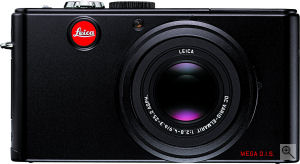
|
| General |
| Camera Type |
Compact |
| Manufacturer |
Leica |
| Model Number |
D-LUX 3 |
| Dimensions |
4.2 x 2.2 x 1.0"
105.7 x 55.8 x 26.3mm |
| Weight |
220.0 g
7.7 oz |
| Planned Price |
$600.00 |
| Image Capture |
| Sensor Type |
1/1.65" CCD
10.40 megapixels (total)
10.20 megapixels (effective) |
| Filter Type |
RGBG |
| Aspect Ratio |
4:3, 16:9 |
| Image Dimensions |
4224 x 2376 (10.0 megapixels)
3568 x 2376 (8.5 megapixels)
3840 x 2160 (8.3 megapixels)
3168 x 2376 (7.5 megapixels)
3248 x 2160 (7.0 megapixels)
2880 x 2160 (6.2 megapixels)
3072 x 1728 (5.3 megapixels)
2560 x 1712 (4.4 megapixels)
2304 x 1728 (4.0 megapixels)
2048 x 1536 (3.1 megapixels)
2048 x 1360 (2.8 megapixels)
1920 x 1080 (2.1 megapixels)
1600 x 1200 (1.9 megapixels)
1280 x 960 (1.2 megapixels) |
| Capture Speed |
Continuous: 2.0 frames per second for 3 frames |
| Image Quality |
3 levels |
| Image Preview / Review |
| Viewfinder |
No |
| LCD |
2.8", 207,000 pixels
100% field of view |
| Playback Zoom |
16.0x max |
| Lens |
| Lens Type |
LEICA DC VARIO-ELMARIT
4x optical zoom |
| Image Stabilization |
Yes |
| Focal Length |
6.3 - 25.2mm (actual)
28 - 112mm (35mm equivalent) |
| Aperture Range |
Wide: F2.8 - F8.0; Tele:F4.9 - F8.0 |
| Focusing System |
1-point, 1-point high speed, 3-point high speed, 9-point, Spot with AF assist lamp
Manual Focus possible (0) steps |
| Focusing Range |
Normal: 20" - infinity (50 cm - infinity)
Macro: 2.0" - infinity (5.0 cm - infinity) |
| Exposure |
| ISO Sensitivity |
Auto, 80, 100, 200, 400 |
| Shutter Speed |
60 - 1/2000 second |
| Exposure Modes |
Aperture, Shutter, Manual |
| Metering Modes |
Intelligent Multiple, Center Weighted, Spot |
| Exposure Compensation |
+/- 2.0EV in 1/3EV increments |
| White Balance |
Image Sensor - Auto, Daylight, Cloudy, Shade, Halogen, Flash, White Set 1, White Set 2, Manual |
| Internal Flash |
Modes: Auto, Auto/Red-eye Reduction, Slow Sync./Red-eye Reduction, Forced On, Forced Off
Range: Wide: 0.6 - 4.1m; Tele: 0.3 - 2.3m |
| Flash Exposure Compensation |
+/- 2.0EV in 1/3EV increments |
| Creative |
| Scene Modes |
Portrait, Sports, Night Scenery, Night Portrait, Fireworks, Party, Snow, Self-Portrait, Food, High Sensitivity, Baby1, Baby2, Soft Skin, Candle, Scenery, Starry Sky, Print |
| Digital Zoom |
4x |
| Self Timer |
Yes, 2 or 10 seconds |
| Movie Format |
QuickTime Motion JPEG with audio
1280x720 and 848x480
Max. frame-rate: 30 frames per second |
| Storage |
| Recording Medium |
SD/MMC, SDHC |
| File System |
Complies with Design Rule for Camera File System (DCF) |
| File Format |
CCD-RAW, Raw, JPEG (EXIF 2.2) |
| Connectivity |
| Video |
Yes, NTSC / PAL switchable |
| Computer |
USB 2.0 Full (LOW) Speed |
| Other |
DC In |
| Power |
| Battery Type |
Lithium Ion rechargeable |
| Battery Form Factor |
Proprietary |
| Product Bundle |
| Software |
Adobe Photoshop Elements 4.0 (PC) / 3.0 (Mac), Quicktime Movie Player |
| Battery / Charger |
1 x Proprietary Lithium Ion rechargeable battery and charger |
| Flash Memory |
64.0MB Secure Digital card |
| Other |
| Digital Print Order Format (DPOF) compliant |
Yes |
| PictBridge Compliant |
Yes |
| Internal Microphone |
Yes |
| Internal Speaker |
Yes |
| More Photos |
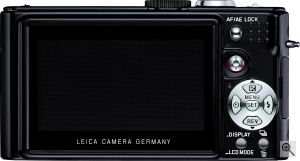
|
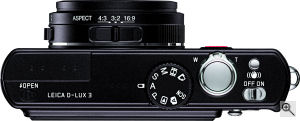
|
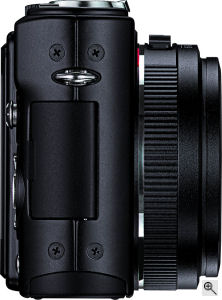
|
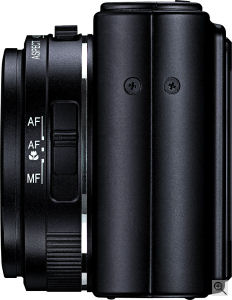
|
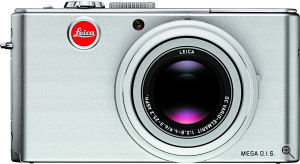
|
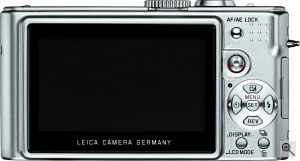
|
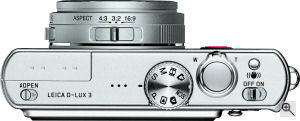
|
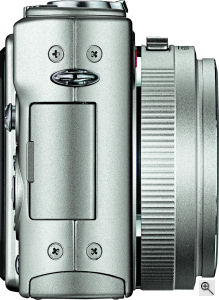
|
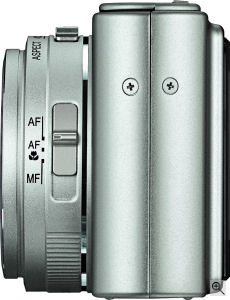
|
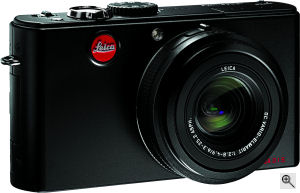
|
| |
|
Original Source Press Release:
|
LEICA D-LUX 3: The compact digital camera for creative freedom and unforgettable pictures
Leica Camera is introducing the new LEICA D-LUX 3 at Photokina in Cologne ( September 26, 2006 to October 1, 2006). The D-LUX 3 is a compact digital camera with outstandingly high-performance optics and a comprehensive range of settings. The camera offers 10 million pixels and many technical improvements compared to its predecessor, the LEICA D-LUX 2. The high-performance LEICA DC VARIO-ELMARIT 1:2.8-4.9/28-112 ASPH zoom lens on the LEICA D-LUX 3 permits a wide range of focal lengths in small picture format, allowing creative scope in picture composition from wide-angle through to the telephoto range. The integral picture stabilizer gives the user additional protection against camera shake in all photography situations, even under difficult lighting conditions. A total of three picture formats (16:9, 3:2 and 4:3) in different resolutions are available for pictures. The display on the LEICA D-LUX 3 has been increased to 2.8”, allowing for the first time the full extent of a picture to be displayed in 16:9 format. The image signal processor has also been improved in comparison to its predecessor model, delivering even faster image processing and saving within the camera. This allows the LEICA D-LUX 3 to be used quickly, reliably and spontaneously at any moment. “The LEICA D-LUX 3 is a compact camera with controls like those of a professional camera and this gives it a particularly wide creative scope. Different picture modes from manual settings through to the subject programs for quick snapshots allow limitless possibilities for creativity in picture composition. Together with the lightning-fast image processing and a compact camera design, the LEICA D-LUX 3 offers users mobility and flexibility, to capture perfect moments in unforgettable pictures“, says Marius Eschweiler, Product Manager for digital compact cameras at Leica Camera. The high-performance LEICA DC VARIO-ELMARIT 1:2.8-4.9/28-112 ASPH zoom lens comprises nine lenses in eight groups. With a maximum aperture of 2.8, the LEICA D-LUX 3 offers versatile picture composition possibilities for brilliant photos with true-to-life colors. The optics are individually matched to the camera sensor. Together with the electronics and software, this enables picture quality with true-to-life colors, excellent sharpness and high brilliance. In relation to color matching, contrast and picture definition, Leica Camera has developed its own profile. This is oriented to the picture characteristics that are well known to Leica System Camera customers from their use in combination with professional film materials and specialist development laboratories. Further security for a successful picture is derived from the integral protection against camera shake (O.I.S.), which can be switched on and off at any time. This reliably protects against camera shake in all photographic situations, since small movements of the hand are systematically compensated. Whether at twilight, during indoor shots, for snapshots or in zoom operation – the result is always a sharp picture without the need for a tripod. The user can operate a changeover lever on the lens at any time to change the side ratio of the photo to any one of three picture formats. Depending on the picture format selected, the resolution varies from 10 MP (16:9), 8 MP (4:3 format) and 7 MP in the classic 3:2 Leica format. The 2.8“ camera display supports the picture format in the 16:9 side ratio and for the first time it shows complete pictures in wide format. With a resolution of 207,000 pixels, it creates an exceptionally brilliant display and enables photographers to make a reliable and exact assessment of the picture composition both when taking the photo and when reviewing it. To reduce the load on the rechargeable battery, the display can also be switched to a darker low-energy mode, without having to sacrifice the outstanding picture quality. With its technical features, the LEICA D-LUX 3 is also optimally suited for use in digiscoping – photography through a scope. A Leica digital adapter allows the compact camera to be attached to the eyepiece of a LEICA TELEVID scope and thus becomes a camera with an extremely long focal length range for keen birdwatchers and naturalists. The event being watched can be captured in a digital picture that fills the format in impressive quality without vignetting. The large 2.8" monitor of the LEICA D-LUX 3 is outstandingly suitable for assessing the section while digiscoping – even for several people - and also for assessing the picture composition. The optical picture stabilization gives shake-free pictures of the natural world even in poor lighting and extreme conditions. This combined with the quick response time of the shutter are just what are required for a spontaneous picture. The LEICA D-LUX 3 is characterized by its clear and concentrated design. The straight-line layout and the reduction to the essentials show the camera’s typical Leica lineage. The LEICA D-LUX 3 offers clear functions and is intuitive and secure in use, thanks to the simple operating concept. A joystick on the rear of the camera simplifies manual focussing. The LEICA D-LUX 3 has an aluminium metal body. The quality of machining lays great emphasis even on small details. The exclusive use of high-quality materials is the basis for a reliable and robust product in use. The LEICA D-LUX 3 is supplied with a 64 MB SD card, a battery charger, a powerful rechargeable battery and a comprehensive software package (Adobe Photoshop Elements 4.0 (PC)/3.0 (Mac), Quicktime Movie Player). Further accessories available include a mains adapter (for direct power supply to the camera from the mains), a spare rechargeable battery and two types of high-quality camera case. The sporty Cordura case is particularly hard-wearing, while the real leather classic moulded case looks very smart. Both camera cases securely protect the products against damage. The LEICA D-LUX 3 is available in silver or black finish. ###
|
Powered by Coranto
|